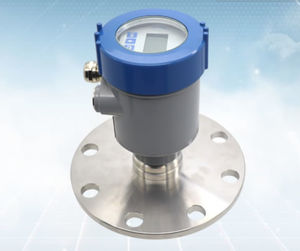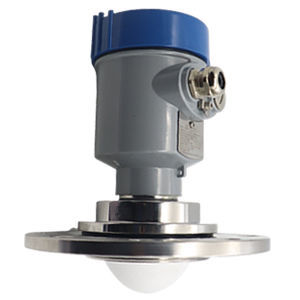
- Detection - Measurement
- Flow, Pressure and Level Measurements
- Radar level transmitter
- Xian Kacise Optronics Co., Ltd.
Radar level transmitter KLD801liquidRS-485HART




Add to favorites
Compare this product
Characteristics
- Technology
- radar
- Medium
- liquid
- Interface
- 4-20 mA, HART, RS-485, CAN
- Other characteristics
- IP67
- Level range
Max.: 100 m
(328'01" )Min.: 0.5 m
(1'07" )- Process pressure
Max.: 0.3 MPa
Min.: -0.1 MPa
- Process temperature
Max.: 80 °C
(176 °F)Min.: -40 °C
(-40 °F)
Description
The KLD800 series radar level transmitter is an 80G ultra-high frequency, millimeter-wave radar with a measurement accuracy of up to ±2mm. Lens antenna design, smaller beam angle, more suitable for complex working conditions such as small-diameter tanks and stirring coils in the tank. With stronger penetrability and multiple measurement modes, various antennas can be selected according to different industries and mines to ensure that the radar can also measure stably and accurately under complex conditions such as high temperature, high pressure and high dust.
KLD801 model 80G FMCW radar level transmitter supports four-wire and two-wire applications.
Due to its higher operating frequency and shorter wavelength, it is suitable for non-corrosive liquid applications, and the working method of transmitting and receiving electromagnetic waves through the lens has unique advantages in normal temperature and pressure environments. It adopts thread fixing method, which makes the installation convenient and simple.
Feature
G1½A / 1½NPT thread installation
Suitable for non-corrosive liquid measurement
80GHz high frequency radar,narrow beam angle, the energy is more concentrated, the directionality is better, and the echo intensity is higher.
The antenna is small in size and easy to install;
Non-contact radar, no wear, no pollution.
Other Xian Kacise Optronics Co., Ltd. products
Radar Level Transmitter
Related Searches
- Flowmeter
- Liquid flowmeter
- Level limit switch
- Pressure transmitter
- Pressure gauge
- Liquid level limit switch
- Level probe
- Liquid level probe
- Analog pressure transmitter
- Gas flowmeter
- Stainless steel flowmeter
- Waterproof flowmeter
- Analog pressure indicator
- Pressure switch
- Pressure probe
- Industrial flowmeter
- Membrane pressure transmitter
- Float level switch
- Stainless steel pressure transmitter
- Relative pressure transmitter
*Prices are pre-tax. They exclude delivery charges and customs duties and do not include additional charges for installation or activation options. Prices are indicative only and may vary by country, with changes to the cost of raw materials and exchange rates.






